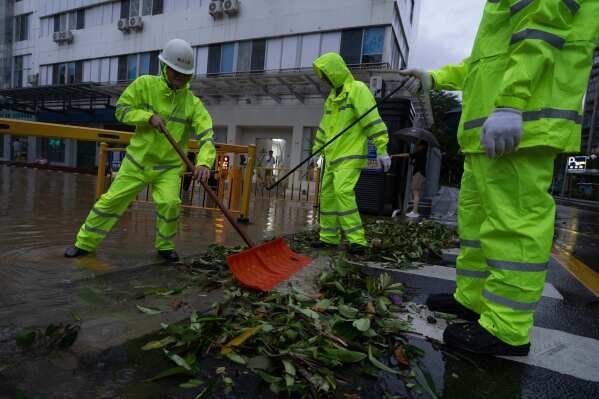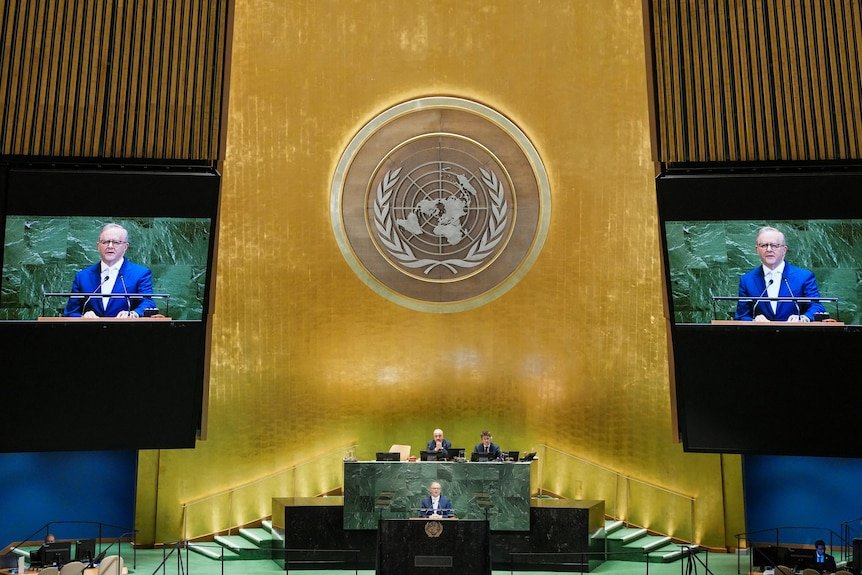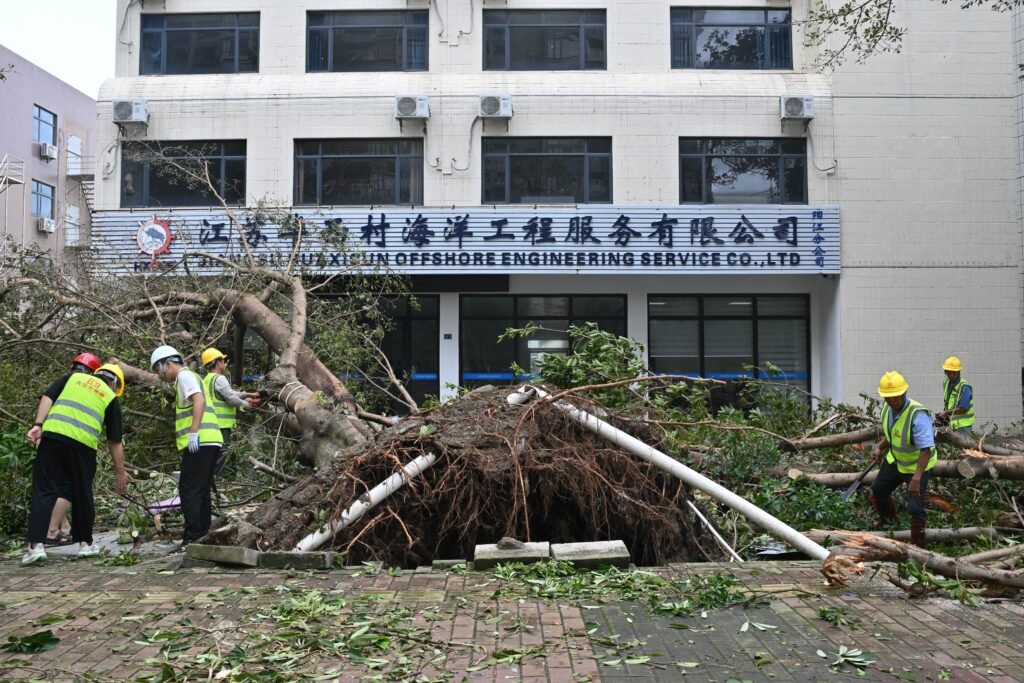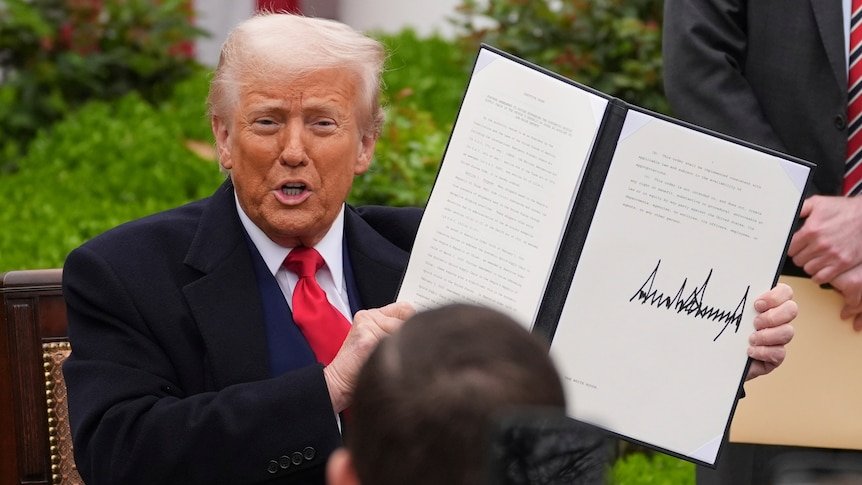Mark Poynting and Matt McGrathBBC News Climate and Science

 European Photopress Agency
European Photopress AgencyChina, the world’s biggest source of planet-warming gases, has for the first time committed to an absolute target to cut its emissions.
In a video statement to the UN in New York, President Xi Jinping said that China would reduce its greenhouse gas emissions across the economy by 7-10% by 2035, while “striving to do better”.
The announcement comes at a time the US is rolling back on its commitments, with President Donald Trump on Tuesday calling climate change a “con job”.
But some critics said China’s plan did not go as far as hoped to keep global climate goals in reach.
“Even for those with tempered expectations, what’s presented today still falls short,” said Yao Zhe, global policy adviser at Greenpeace East Asia.
While the year’s big gathering of global leaders will be at COP30 in Brazil in November, this week’s UN meeting in New York has extra relevance because countries are running out of time to submit their new climate plans.
These pledges – submitted every five years – are a key part of the Paris climate agreement, the landmark deal in which nearly 200 countries agreed steps to try to limit global warming.
The original deadline for these new commitments – covering emissions cuts by 2035 – was back in February, but countries are now scrambling to present them by the end of September.
Speaking before the meeting UN Secretary-General António Guterres said the pledges were critical to keep the long-term rise in global temperatures under 1.5C, as agreed in Paris.
“We absolutely need countries to come […] with climate action plans that are fully aligned with 1.5 degrees, that cover the whole of their economies and the whole of their greenhouse gas emissions,” he said.
“It is essential that we have a drastic reduction of emissions in the next few years if you want to keep the 1.5 degrees Celsius limit alive,” he added.


As the world’s biggest emitter, China’s plans are key to keeping this goal in sight.
Back in 2021, President Xi announced that China would aim to peak its emissions this decade and reach “carbon neutrality” by 2060.
Today’s pledge marks the first time that China has set actual emissions reductions targets on that path.
“These targets represent China’s best efforts based on the requirements of the Paris agreement,” President Xi said.
It also covers all greenhouse gases, not just carbon dioxide, and will be measured “from peak levels” of emissions – the timing of which President Xi did not specify.
He added China would:
- expand wind and solar power capacity to more than six times 2020 levels
- increase forest stocks to more than 24bn cubic metres
- make “new energy vehicles” the mainstream in new vehicle sales
Off track for 1.5C
Such is the scale of China’s emissions that any reduction would be significant in climate terms.
China was responsible for more than a quarter of planet-warming emissions in 2023, at almost 14bn tonnes of carbon dioxide-equivalent.
A 10% reduction in China’s emissions would equate to 1.4bn tonnes a year, which is nearly four times the UK’s total annual emissions.
But China’s new target does fall short of what would be needed to meet international climate goals.
“Anything less than 30% is definitely not aligned with 1.5 degrees,” said Lauri Myllyvirta, lead analyst at the Centre for Research on Energy and Clean Air.
Most scenarios to limit warming to 1.5C – or even well below 2C – would require China to make much greater cuts than that by 2035, he added.
In many cases, that would mean more than a 50% reduction.
It is further evidence of the gap between what needs to be done to meet climate targets and what countries are planning.
Earlier this week, a report by the Stockholm Environment Institute warned that governments around the world are collectively planning to produce more than double the amount of fossil fuels in 2030 than would be in line with keeping to 1.5C.
Ramp-up of renewables
What gives some observers hope is that China has a track record of exceeding many of its international climate commitments.
It had, for example, pledged to reach a capacity of 1,200 gigawatts for wind and solar power by 2030. It smashed through that goal in 2024 – six years early.
“The targets should be seen as a floor rather than a ceiling,” said Li Shuo, director of China Climate Hub at the Asia Society Policy Institute.
“China’s rapid clean tech growth […] could propel the country much further over the coming decade,” he added.
“China’s 2035 target simply isn’t representative of the pace of the energy transition in the country,” agreed Bernice Lee, distinguished fellow and senior adviser at Chatham House.
“There’s a case to be made that Beijing missed a trick in landing a more ambitious goal as it would have won broad global praise – a stark contrast to the US,” she added.
While China ramps up its renewables, it continues to rely heavily on coal, the dirtiest fossil fuel.
Last year saw China’s electricity generation from coal hit a new record – although initial data suggests it has fallen in the first half of 2025 amid a surge in solar electricity.
“There is also mounting evidence that the country’s emissions are plateauing, with this year’s levels expected to be lower than in 2024,” said Li Shuo.
Today’s new target signals “the beginning of decarbonisation after decades of rapid emissions growth”, he added.










